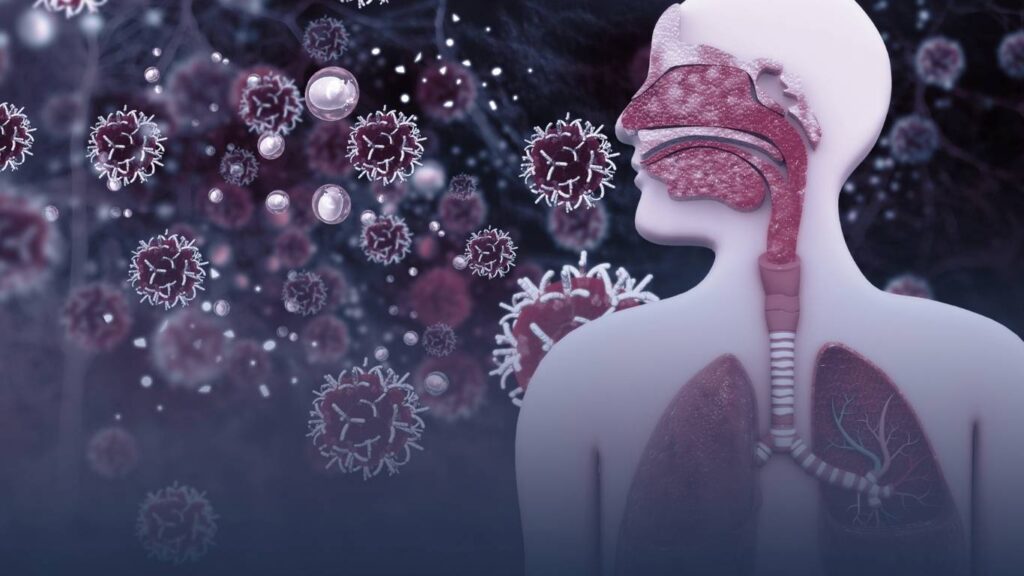How to Prevent and Treat Lymphedema-Related Infections
Living with lymphedema can be significantly challenging when the condition increases the risk of developing an infection. Since the lymphatic system plays a crucial role in fighting infection, any disruption can leave people with lymphedema more vulnerable. Fortunately, with proper care, it is possible to prevent and treat lymphedema-related infections effectively. This guide dives into practical strategies, symptoms to watch out for, and the latest trends in managing lymphedema and infections.
What is Lymphedema and How Does it Relate to Infection?
Understanding Lymphedema and Its Symptoms
Lymphedema is a long-term condition that causes swelling, typically in an arm or leg, due to damage to the lymphatic system. This condition occurs when lymphatic vessels cannot drain lymph fluid properly, leading to fluid buildup in the body affected by lymphedema. Symptoms of lymphedema may include swelling, a heavy or tight feeling in the affected limb, and reduced flexibility.
Primary lymphedema usually results from genetic factors that affect lymphatic development, while secondary lymphedema often arises due to cancer surgery, breast cancer treatment, or other procedures that damage lymph nodes. Regardless of its cause, lymphedema may also lead to complications, including a higher risk of infection.
How Does Lymphedema Increase the Risk of Infection?
Lymphedema increases the risk of infection because the lymphatic system transports white blood cells that help fight infection. When lymphatic vessels are damaged or blocked, the body’s ability to combat infections is weakened. This can lead to bacterial skin infections, such as cellulitis, a common complication of lymphoedema.
Additionally, lymphedema swelling can cause the skin to stretch and crack, creating openings for bacteria to enter. This makes people with lymphoedema more vulnerable to infection, emphasizing the importance of proper skin care and preventive measures.
Common Causes of Lymphedema
- Cancer Treatment: Breast cancer treatment and other cancer therapies can damage lymph nodes, increasing the risk of lymphedema.
- Cancer Surgery: Removing lymph nodes during surgery may disrupt lymphatic drainage, leading to secondary lymphedema.
- Infection and Lymphoedema: Recurrent infections like cellulitis can damage lymphatic vessels and worsen swelling.
- Genetic Factors: Primary lymphedema is often inherited and may develop without external triggers.
What Are the Symptoms of Lymphedema-Related Infections?
Recognizing Signs of Infection in Lymphedema Patients
Early detection of an infection is crucial for people with lymphedema since untreated infections can escalate quickly. Key signs of infection include:
- Redness and warmth in the affected area
- Increased swelling and pain
- Fever and chills
- Skin that feels tender or firm
- An infection called cellulitis, which causes swelling and redness
If you think you have an infection, it is essential to seek medical help promptly, as early-stage lymphedema infections respond better to treatment.
Symptoms of Lymphedema vs. Symptoms of Infection
It’s important to distinguish between lymphedema symptoms and signs of infection:
- Lymphedema Symptoms: Swelling, heaviness, reduced flexibility, and skin tightness
- Infection Symptoms: Redness, warmth, fever, and increased pain
Recognizing these differences can help you determine when to consult a doctor.
What Complications Can Arise from Lymphedema?
Understanding Secondary Lymphedema and Its Risks
Secondary lymphedema, caused by external factors such as cancer treatment or infections, poses a higher risk of developing complications. The most common complication is a bacterial infection of the skin, which can lead to severe lymphedema if left untreated.
Potential Complications Associated with Lymphedema
- Infection Called Cellulitis: A bacterial skin infection that can spread quickly and requires antibiotic treatment
- Fungal Infections: Moist environments created by swelling can lead to fungal infections
- Swelling from Lymphedema: Chronic swelling may cause mobility issues and discomfort.
- Complications of Lymphoedema: Left untreated, lymphedema can lead to thickened skin, reduced limb function, and severe infections
How Can You Prevent Infections When You Have Lymphedema?
Skin Care Tips for Lymphedema Patients
Proper skin care is essential to reduce the risk of developing an infection. Follow these tips to protect your skin:
- Keep your skin clean and moisturized to prevent dryness and cracking.
- Use powder to prevent moisture buildup in skin folds.
- Avoid cuts, scrapes, and insect bites that can introduce bacteria.
- Protect your skin from the sun to prevent burns that can damage lymphatic vessels.
How to Protect Your Skin from Infection
- Wear a compression garment as part of the treatment to help reduce swelling and improve lymphatic drainage.
- Use gloves when gardening or cleaning to avoid scratches.
- Keep your nails short and clean to prevent accidental scratches.
- Avoid tight clothing that can restrict lymphatic flow.
Reducing the Risk of Developing an Infection
- Maintain a healthy weight to reduce the strain on your lymphatic system.
- Exercise regularly to promote lymph fluid movement.
- Follow your lymphoedema treatment team’s advice for managing swelling.
- Monitor your skin daily for signs of infection, such as redness or warmth.
What Are the Treatment Options for Lymphedema and Infections?
Treating Lymphedema: Effective Strategies
Treatment for lymphedema aims to reduce swelling and improve lymphatic function. Common methods include:
- Compression Therapy: Wearing compression garments may help reduce swelling and improve circulation
- Manual Lymphatic Drainage (MLD): A gentle massage technique that stimulates lymphatic vessels
- Exercise: Regular physical activity can help lymph fluid move through the body
- Skin Care: Protecting your skin from injury reduces the risk of infection
Antibiotic Treatment for Infections
If you develop an infection, prompt antibiotic treatment is crucial. A doctor may prescribe oral antibiotics for mild infections or intravenous antibiotics for more severe cases, such as an infection of the deep tissues.
- Common Antibiotics: Penicillin and cephalosporins are often used to treat bacterial skin infections
- Treating Infection: Complete the entire course of antibiotics as prescribed to prevent recurrence
When to See a Doctor for Lymphedema-Related Infections
Seek medical help if you experience:
- Sudden swelling and redness
- Fever or chills
- Pain that worsens quickly
- Signs of lymphedema combined with symptoms of infection.
Prompt treatment can prevent complications and help you manage your condition effectively.
How to Manage Lymphedema Long-term?
Tips for Coping with Lymphedema in Daily Life
Living with lymphedema requires ongoing care and lifestyle adjustments. Here are some practical tips for coping with lymphoedema:
- Stay Active: Regular exercise can help reduce swelling and improve mobility
- Use Compression Garments: Wearing a compression garment daily may help control swelling
- Elevate Your Limb: Raising the affected arm or leg can reduce fluid buildup
- Maintain Skin Health: Keep your skin clean and moisturized to prevent cracks and infections
Working with a Lymphedema Specialist
A specialist lymphoedema therapist can create a personalized treatment plan to help you manage swelling and reduce the risk of infection. Your lymphoedema treatment team may include the following:
- Physical therapists trained in manual lymphatic drainage
- Dermatologists who can help manage skin issues
- Oncologists, if your lymphedema is related to cancer treatment
Ongoing Research and Innovations in Lymphedema Treatment
Current trends in research and lymphoedema treatment focus on improving long-term outcomes and reducing complications. Some promising developments include:
- Advanced Compression Garments: New materials and designs offer better comfort and effectiveness
- Surgical Options: Microsurgery to restore lymphatic drainage is becoming more widely available
- Innovative Therapies: Low-level laser therapy and pneumatic compression devices may help reduce swelling
- Gene Therapy: Research is exploring genetic treatments that could potentially cure lymphedema
Conclusion
Preventing and treating lymphedema-related infections requires good skin care, prompt medical attention, and long-term management strategies. Protecting your skin, using compression garments, and working with a specialist lymphoedema team can reduce the risk of infection and improve your quality of life. Stay informed about the latest research and treatment options, and always seek professional help if you notice signs of disease. With the right approach, living well with lymphedema is possible.
FAQs
Q: What are the symptoms of lymphoedema?
A: The symptoms of lymphoedema include swelling in the affected part of the body, a feeling of heaviness or tightness, restricted range of motion, and recurring infections. In some cases, the skin may become thickened or hardened.
Q: What are the complications of lymphoedema?
A: Complications of lymphoedema can include chronic infections, skin changes, and an increased risk of developing lymphangiosarcoma, a rare form of cancer. Managing lymphoedema is essential to reduce these risks.
Q: What are the causes of lymphoedema?
A: Causes of lymphoedema can be classified into primary and secondary lymphoedema. Primary lymphoedema usually results from genetic factors affecting the lymphatic system, while secondary lymphoedema is often caused by surgery, radiation therapy, or infections, particularly after treatment for breast cancer.
Q: How is lymphoedema diagnosed?
A: Diagnosing lymphoedema typically involves a physical examination by a healthcare provider, a review of medical history, and sometimes imaging tests to assess the lymphatic system. A lymphoedema specialist may be consulted for a comprehensive evaluation.
Q: What are the methods for treating lymphoedema?
A: Treating lymphoedema often involves a combination of therapies, including compression garments, manual lymph drainage, exercise, and skincare. The goal is to reduce swelling and prevent complications.
Q: How can I prevent lymphoedema?
A: Preventing lymphoedema involves protecting the affected area, such as avoiding injury, maintaining skin hygiene, and managing weight. It is crucial for those at risk, particularly after cancer treatment, to follow healthcare providers’ recommendations.
Q: How can I cope with lymphoedema?
A: Coping with lymphoedema may include learning effective self-management strategies, seeking support from healthcare professionals, and connecting with support groups. Education about the condition and its management is vital for emotional and physical well-being.
Q: What is the connection between lymphoedema and breast cancer?
A: The risk of developing lymphoedema is notably higher for individuals who have undergone treatment for breast cancer, particularly if lymph nodes have been removed or damaged during surgery or radiation therapy. Awareness and early intervention are crucial for those affected.
Q: Is there a cure for lymphoedema?
A: Currently, there is no cure for lymphoedema, but it is manageable. Treatment can significantly reduce symptoms and improve quality of life. Ongoing research and advancements in lymphoedema treatment aim to enhance treatment options.
Q: How do infections relate to lymphedema?
A: Lymphedema may cause skin changes that increase the risk of infection. Treating infection promptly is essential to prevent further complications and manage symptoms effectively.





